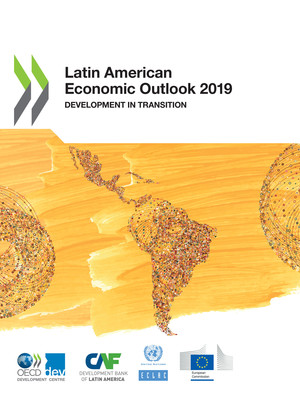copy the linklink copied! Costa Rica
Recent trends
Costa Rica has made development progress in the past decades. Today, only 10.7% of the population lives on less than USD 5.5 a day (2011 PPP), relative to 24% in Latin America and the Caribbean (LAC). The share of the population living on USD 5.5-13 a day (2011 PPP) is also lower than the LAC average of 36.5%, but nonetheless remains at 32.5%. Moreover, life expectancy is in line with the OECD average and above many higher-income economies in the region.
In addition, the country doubled its gross domestic product (GDP) per capita between 1990-2017. Costa Rica’s labour productivity, measured as GDP per person employed, grew steadily in the past decades. Nonetheless, Costa Rica shows one of the highest levels of inequality among the countries surveyed in the region with a Gini index of 48.7.
National strategies and international co-operation for development
The “Plan Nacional de Desarrollo y de Inversion Publica 2019-22” [National Plan of Development and Public Investments 2019-22] presents a single national objective, with a focus on sustainable development from the economic, social and environmental point of view. This objective is translated into five national goals linked to the dimensions of economic growth, unemployment, multidimensional poverty, inequality and decarbonisation of the economy. Among the strategic areas of intervention, the plan includes policies for “Innovation, competitiveness and productivity” and “Infrastructure, mobility and territorial planning”. Together with an “Economy for stability and growth”, it includes policies for reducing the public deficit, as well as for revitalising national productivity and quality employment through innovation. For example, it foresees the reduction of the digital gap and the strengthening of small and medium-sized enterprises through regional workshops of innovation and entrepreneurship.
The strategic areas of “Health and social security” and “Education for sustainable development and coexistence” look mainly at social programmes. These include the National Plan of Environmental Health for the increase of the quantity of solid waste managed integrally, the adoption of infrastructure for the supply of integral and integrated healthcare services, as well as strategies for the development of new skills in society. This involves not only the renovation of the educational infrastructure, but also the strengthening of the formative offer and of training for digital alphabetisation and employability.
The areas of “Human security” and “Territorial development” include strategies for guaranteeing the rights of the population to a dignified life, in safe environments and in respect of the specificities of each territory. Among others, these include policies for the reduction in the number of poor households. Costa Rica also developed its national Multidimensional Poverty Index through a partnership between the public and the private sectors in 2015. Other policies foresee the Integral Prevention Strategy for Public Security and efficient management of public institutions.
In terms of public financing capacities, Costa Rica’s total tax revenues were 22.2% of GDP in 2016 (vs. 22.7% in LAC and 34.3% in the OECD). The country made e-invoicing mandatory for all companies by the second semester of 2018. Costa Rica is also a signatory of the Multilateral Competent Authority Agreement on the Exchange of Country-by-Country Reports and of the Multilateral Competent Authority Agreement on the Automatic Exchange of Financial Account Information to fight tax evasion.
Costa Rica’s international co-operation projects give priority to strengthening public sector management systems, sustainable cities, integrated territorial development and issues related to biodiversity, risk management and climate change at the national level. The environment sector absorbed 45.6% of the total non-reimbursable resources received between 2014 and 2017. Costa Rica’s top South-South co-operation donors include Mexico, Turkey, Colombia and Uruguay. El Salvador, Colombia, Paraguay, Mexico and Uruguay are the top recipients, while Japan, the United States, Germany and the People’s Republic of China (hereafter “China”) are its main bilateral co-operation providers. At the same time, the European Union, Inter-American Development Bank, UNIDO and the Global Environment Facility provided most of Costa Rica’s other multilateral funds. Between 2013-16, Morocco and Costa Rica exchanged experience on the prevention of forest fires, the protection of biodiversity, ecotourism and the development of value chains as part of a project funded by Germany. Together with Spain, Germany is also Costa Rica’s most frequent Triangular Co-operation partner.
At the regional and global levels, priority is given to environment and climate change, education, innovation, knowledge and digitalisation of the economy, human rights, peace, democracy and disarmament, security and the global drug problem, crime and violence prevention, human mobility, migration and refugees, and economic and commercial diplomacy. Costa Rica took part in various South-South co-operation projects with partners in the region and across the world on the aforementioned topics.
Metadata, Legal and Rights
https://doi.org/10.1787/g2g9ff18-en
© OECD/UNITED NATIONS/CAF/EU 2019
The use of this work, whether digital or print, is governed by the Terms and Conditions to be found at http://www.oecd.org/termsandconditions.


